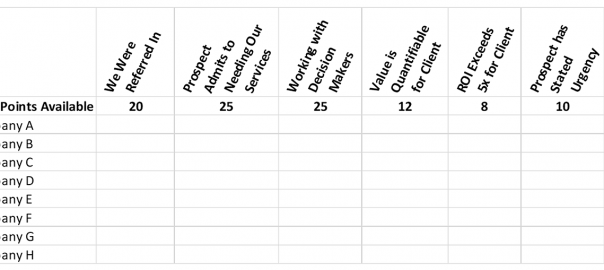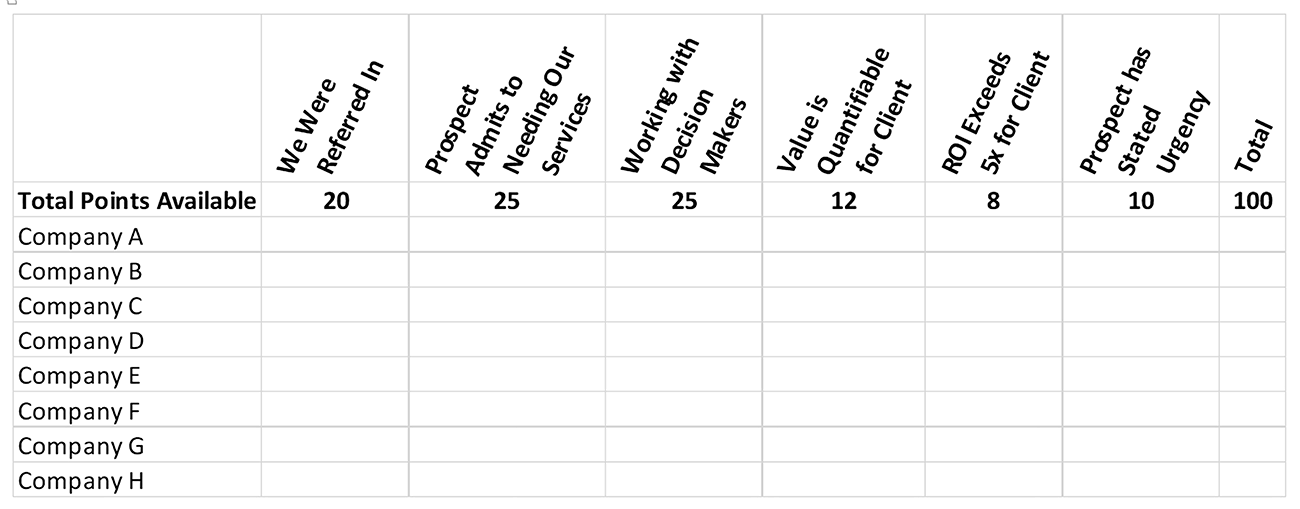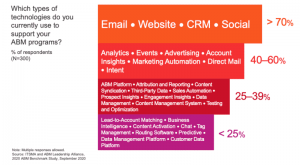— December 12, 2017

TeroVesalainen / Pixabay
It’s very common for companies we work with to have a pipeline management and review process in place. It’s also very common for us to find that the process is broken. It’s important that management keeps salespeople focused on the right activities to move deals through the pipeline. Here are some good ideas to help.
Some Facts:
I reviewed data on 417,000 salespeople from the OMG (Objective Management Group) database, and discovered that 41% of these salespeople are not following a predictive sales process! And only 54% are adequately CRM savvy!
Just following a process and using CRM isn’t enough, of course. To be successful, salespeople need both a workable and effective CRM system, and predictive sales process in place. While most companies have a funnel or pipeline process, the different elements or stages of the pipeline can be faulty. They are often based on set actions, as opposed to being established based on predicting success.
Setting Up a Predictive Process
So, let’s start here when considering a better way to manage the pipeline. First, consider different opportunities by using the following guidance, then think about ways to incorporate great questions into your sales process to help salespeople really qualify those opportunities more skeptically.
Step 1: Create a Scoring System
The first thing a predictive pipeline needs is adequate velocity for deals to move through to conclusion – either we win the business or it goes away and we quit clogging up the report and our mind with stuff that won’t happen. To accomplish this, the process should score each deal. This requires first, a discussion of what characteristics make a deal a perfect fit for you, and what characteristics make a deal have a higher probability that you will win.
Once you have determined this, you can establish a scoring system based on the different characteristics. This should be the initial guidance for where salespeople should spend their time.
A simple example is below and is just that, an example. You will want to create your own grid of elements that make an opportunity likely to close.
Step 2: Establish the Pipeline Stages with Probability of Closing Assigned.
A suggested breakdown of the stages follows, but you may have adjustments based on your market. Just be sure to assign the probability of each stage objectively and do not allow salespeople to subjectively assign closing probabilities. If you do not know for sure, then use the suggested probabilities below, and after collecting data for an appropriate time, tweak the closing percentages.
Pipeline Stage Criteria:
1st Stage: Meeting/discussion scheduled – they are willing to talk, but we do not know if there is a real opportunity or not yet. 0% probability.
2nd Stage: We met/talked, they have a compelling reason to do something, and would be willing to choose us to help. 25% probability.
3rd Stage: We have established our value from their point of view, our solution will create an appropriate ROI for them, and they are willing to spend the money and have the money to spend. 50% probability.
4th Stage: We know how they will decide, why they will choose a certain solution, we know who is involved in the decision making and what matters to them and the timeline is reasonable – We are now able to propose or quote. 75% probability.
By having clearly articulated pipeline stages with probabilities assigned, you will be able to easily identify which salespeople are having difficulty moving deals along and in what section of the pipeline they struggle.
Step 3: Conduct an Initial Pipeline Review
Run every single deal with every salesperson, individually, through a questioning process. But do it just once. Make them defend why a particular deal is in the particular stage of the pipeline. Adjust the stage of the deals accordingly.
Step 4: Set a Regular Pipeline Review Meeting
Establish with each salesperson, a 1 versus 1 cadence, and conduct a review of a subsegment of deals in an individual’s pipeline weekly, bi-weekly or monthly. The frequency depends on the velocity of your typical sales cycle. Quick sales cycles, where activity and thus deal status change rapidly, require a weekly review. Longer sales cycles where not much is going to happen from week to week require a less frequent review.
Again, this meeting is a 1v1 discussion. It is not a public discussion of how much an individual has in their pipeline. When we focus attention by asking for a roll call in public of what deals are in the pipeline, we reinforce the bad behavior of just putting crap into the pipeline.
Be sure to use your pipeline stage criteria above when discussing the deals. Ask these questions each time:
- Which 2 opportunities (or pick a reasonable number) will you move this week? (or month depending on frequency of conversation)?
- What specifically are you going to do to make that happen?
- What is the agreed upon next step? (And then pick a couple or handful of other opportunities to question.)
In subsequent meetings add the following questions:
- What happened with the 2 opportunities you were going to move forward?
- Did you do what you said you were going to do?
Note: Establishing an agreed upon next step is critical. This is not “I am waiting to hear back.” But could be: “I have a meeting scheduled with my deal champion for next Tues at 10:00 where they will give me an update and ask me any clarifying questions. I will ask whether these certain problems still exist (that we can solve) and what the personal impact is of them not yet being resolved.”
Step 5: Move Them or Blow Them Up
Stick to the discipline of scrutinizing deals before they get into the pipeline. Then be fearless about forcing salespeople to defend why an opportunity is where it is in the pipeline or why it is even in the pipeline. It is okay to remove weak opportunities from the pipeline. It doesn’t mean that they won’t become a good opportunity again. It’s very critical that you do not allow your salespeople to use the pipeline to house all leads. Otherwise you run the risk of contracting Fluffy Pipeline Syndrome, which you can read more about in an article I published here.
Step 6: Following Weak Leads
Set a lead nurturing plan in place to periodically contact those weak opportunities that have been moved out of the pipeline. They are still leads, just not opportunities now. The more you can systematize this process, the less a salesperson will feel the need to keep any leads in the pipeline that aren’t imminent.
Implement and Follow the Plan
Now that you have a workable, effective pipeline plan in place that all your salespeople are following, you can expect to have very predictable data on where leads are and which ones are likely to close and when. Of course, if you need help with your specific plan, just let us know.
Business & Finance Articles on Business 2 Community
(28)







